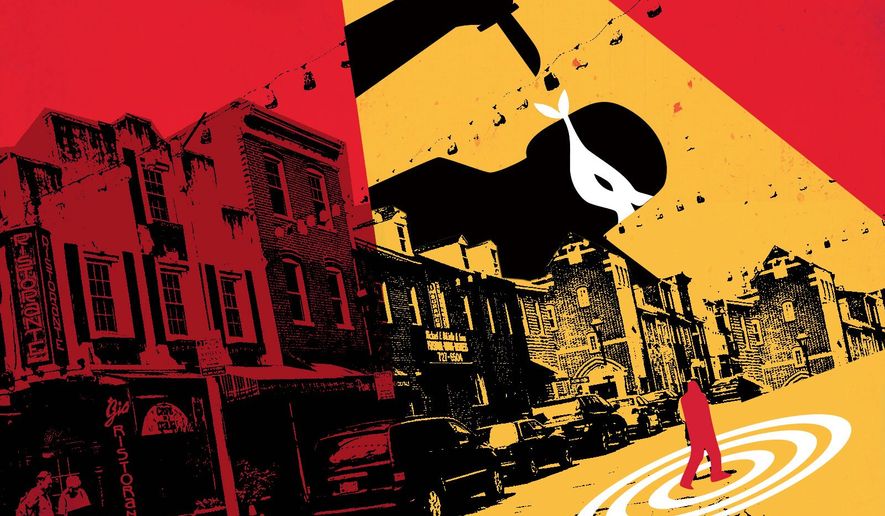OPINION:
Baltimore has finally launched its controversial test of its Aerial Investigation Research (AIR) program. It’s only controversial because longtime detractors of even clearly constitutional law enforcement, such as the American Civil Liberties Union (ACLU), have sought to portray the program as invasive mass surveillance of the general public.
In fact, AIR presents cities wracked with violence and death, such as Baltimore, its best opportunity to achieve significant reductions in violence, while simultaneously respecting the constitutional rights of its citizens and visitors.
In order to have an opinion on Baltimore’s AIR program, it’s necessary to first understand the technology itself. Though it has been portrayed by some law enforcement antagonists as the embodiment of Orwell’s “Big Brother,” it actually presents a very modest to almost nonexistent intrusion into the privacy of the public. In fact, those of us who carry a smartphone have already ceded significantly more of our personal privacy.
The AIR program operates by having one or more Cessna aircraft flying at about 10,000 feet while taking a rapid series of still photos of the city below. Even with a high-powered camera, the city below looks like a grid of streets. Both cars and people are tiny and cannot be identified at all. In fact, no part of the program seeks to identify people.
That’s right, this “massive intrusion on personal privacy” is actually incapable of determining the identity or location of any individual. By looking retrospectively at photos after a serious crime has occurred, the vendor, Persistent Surveillance Systems, attempts to determine where possible suspects came from before the crime occurred and where they fled to after. That’s it. The rest of the work, such as putting an identity to any suspects or other participants in the crime, will rely on traditional detective work.
Almost immediately after the smoke cleared from the Baltimore riots of 2015, the BPD began exploring the possibility of using this technology as an adjunct to its existing crime-fighting strategies. The city was overwhelmed with violence during and since the days of rioting and looting in the days that followed the death in police custody of Freddie Gray.
The Baltimore Police Department was (and is) severely understaffed and had fallen decades behind on technology. For this and other reasons, it clearly lacked the internal capacity to quickly get the violence under control. The department’s leadership was tasked with finding a creative way of quickly stemming out-of-control violence. There was and is a compelling need to identify and arrest perpetrators of violence, often repeat offenders who have yet to face accountability in a broken system.
Baltimore’s particular brand of street violence is unrelenting, uniquely fatal and fueled by a thick “stop snitching” culture. Even when violent recidivists are arrested, the likelihood of them remaining incarcerated is limited because of social justice policies of its prosecutor’s office and the reluctance of witnesses to testify in court for fear of retaliation. There are many cities in America that could really benefit from a technology that leads detectives to killers, but Baltimore is first among them.
In 2016, using funding from the John and Laura Arnold Foundation, Baltimore police began exploring the potential of this technology to retrospectively identify perpetrators or violence. The technology had been used successfully to identify terrorists in Iraq and curb cartel-related violence in Mexico. It was worth a try in Baltimore, a city that has had well in excess of 300 murders a year since 2015.
Very early in the testing phase of the technology, a story in Bloomberg Businessweek put an end to the program. At the time, it seemed that the AIR program would never return to Baltimore and, for that matter, any other American city. The public was not necessarily opposed to using the technology, but many thought the program should have been made public in advance of any testing. There also seemed to be significant misunderstanding of the technology and its constitutionality, which, despite ACLU objections, cannot be seriously questioned.
Now, four years later and facing even higher levels of violence along with mounting criticism of its low homicide closure rate, police leaders revived the idea in early 2020. This time, public input was sought in advance of even the testing and evaluation phase of the program. It was clear from the police department’s announcement, however, that aerial video had a green light.
Naturally, the ACLU objected and, working with activists, filed suit in federal court in April, seeking a preliminary injunction. Fortunately for those who would like to see absurd levels of violence reduced in cities like Baltimore, U.S. District Judge Richard D. Bennett denied the injunction. Judge Bennett got it exactly right. The ACLU will have to take its fight to the Fourth Circuit Court of Appeals in Richmond, Virginia. Meanwhile, Baltimore police will be testing the efficacy of the program. Cities around the country will be watching.
Violence hasn’t slowed much in our cities, even while most cities are shuttered as we all wait for COVID-19 to subside. When it has passed and we all get back to work, we will be met with a badly bruised economy with record levels of unemployment. Thousands of incarcerated individuals have been emptied from our prisons and detentions facilities. Law enforcement will need every advantage it can muster, technological and otherwise, to confront the violence it will surely face.
• Jason Johnson is a former deputy commissioner of the Baltimore Police Department. Since January 2019 he has served as president of the Law Enforcement Legal Defense Fund.




Please read our comment policy before commenting.